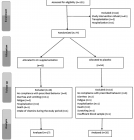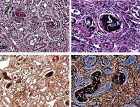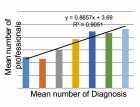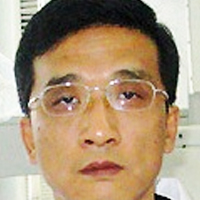Table of Contents
Neurosciences and dynamical system theory: some short remarks
Published on: 24th September, 2021
OCLC Number/Unique Identifier: 9278288957
This very brief communication is aimed to highlight some recent contact points between neurosciences and dynamical system theory, passing through paleoneurology, with some remarks suggesting further possible interdisciplinary developments.
Differential roles of trithorax protein MLL-1 in regulating neuronal Ion channels
Published on: 8th September, 2021
OCLC Number/Unique Identifier: 9244745887
Repressive regulation of potassium channel genes by Polycomb group (PcG) proteins contributes to PcG protein-mediated neuroprotection against neuronal ischemic injury, as seen in an ischemic stroke. Here we asked the question whether Trithorax group (TrxG) proteins, the antagonistic partners of PcG proteins (i.e, epigenetic activators targeting the same genes) may also regulate potassium channels. Results of patch-clamp studies on cultured neuronal cells showed that inhibition of TrxG protein MLL-1 led to an increase in potassium channel activity, an unexpected effect for a presumed gene activator. In contrast, decreased sodium currents were observed with MLL-1 inhibition. Increased or decreased levels of potassium channel protein Kv2.1 or sodium channel protein Nav1.2, respectively, were seen with MLL-1 inhibition, as determined by immunocytochemistry. These results, for the first time, demonstrate an involvement of TrxG protein MLL-1 in regulating neuronal ion channels, potentially repressing potassium channel genes.
Pituitary adenoma and meningioma simulating a single selar and paraseal injury
Published on: 24th August, 2021
OCLC Number/Unique Identifier: 9244744986
To analyze the importance of including axial cuts in studies of any brain region, including the selar. Remember the possibility of the existence of two different tumors simultaneously, in the same anatomical region.
Five-year follow up on the single level corpectomy
Published on: 27th July, 2021
OCLC Number/Unique Identifier: 9147510496
Single-level Anterior Cervical Decompression and Fusion (ACDF) was initially performed using Iliac Crest Bone Graft (ICBG) [1]. Fusion rates improved when a surgical technique change, the addition of anterior plate fixation, was incorporated decades later [2,3]. Single level ACDFs with a machined allograft and plate fixation technique eventually became the industry standard as it demonstrated equivalent fusion rates with fewer complications than single level ACDFs with ICBG. This surgical technique was extended for use in patients with contiguous disk herniations. Multilevel ACDFs performed with machined allografts or interbody spacers and a two-level plate offered shorter operative times, less blood loss, better restoration of lordosis, and less immediate pain [4]. Successful multi-level ACDFs were strongly influenced by the bone graft source [5], the smoking addiction [6], and the construct stability [7]. Placement of two additional fixation screws in the central vertebral body, another improvement in the surgical technique, increased the construct strength compared to constructs with screws only placed into the end vertebral bodies [8]. Using allografts for multilevel ACDFs was a device disadvantage as they often resulted in high non-union rates [9,10].
Multimodal treatment strategies in Huntington’s disease
Published on: 15th July, 2021
OCLC Number/Unique Identifier: 9137583956
Huntington’s disease (HD) is an incurable neurodegenerative disease that causes involuntary movements, emotional lability, and cognitive dysfunction. HD symptoms usually develop between ages 30 and 50, but can appear as early as 2 or as late as 80 years. Currently no neuroprotective and neurorestorative interventions are available. Early multimodal intervention in HD is only possible if the genetic diagnosis is made early. Early intervention in HD is only possible if genetic diagnosis is made at the disease onset or when mild symptoms manifest. Growing evidence and understanding of HD pathomechanism has led researchers to new therapeutic targets. Here, in this article we will talk about the multimodal treatment strategies and recent advances made in this field which can be used to target the HD pathogenesis at its most proximal level.
Facial-onset sensory-motor neuronopathy, a rare variant of Huntington’s disease or chance association?
Published on: 15th July, 2021
OCLC Number/Unique Identifier: 9136190397
Objectives: To describe a patient with facial-onset sensory-motor neuronopathy (FOSMN) that later developed Huntington’s disease (HD).
Case report: A 62-year-old woman complained of progressive dysphagia 8 years before referral. At initial evaluation, there was excessive salivation, dysphagia, and sensory-motor trigeminal impairment. Denervation was noted on the upper limbs and the tongue. Blink reflexes were abolished. Genetic study of amyotrophic lateral sclerosis (ALS)-related genes was normal. She was diagnosed with FOSMN syndrome. Her clinical state progressively worsened with corneal anesthesia, severe denutrition, right arm and axial weakness. Seven years after referral, she was unable walk and developed generalized chorea. Abnormal huntingtin gene repeat expansion confirmed the diagnosis of HD. She died 16 years after onset of dysphagia.
Conclusion: Cases with both HD and ALS have already been reported but not FOSMN and HD, to our knowledge. Some FOSMN cases have been linked to ALS-related gene mutations and HD phenocopies have been associated with C9ORF72 repeat expansions. Recently, huntingtin repeat expansions were described in the ALS population. Although a chance association cannot be excluded, data from the literature are in favor of a pathogenic relationship between FOSMN and HD in this particular case. We suggest that huntingtin gene be more systematically studied in patients with FOSMN.
Role of neuron specific enolase as a biomarker in Parkinson’s disease
Published on: 6th July, 2021
OCLC Number/Unique Identifier: 9137583301
Parkinson’s disease (PD) is thought to be the most common neurodegenerative disease with movement disorder. The key motor symptoms are rigidity, tremor, akinesis/hypokinesia/bradykinesia, and postural instability. However, in our day-to-day clinical practice we tend to see several other symptoms which may be motor or non-motor. Non-motor symptoms (NMS) are quite common and debilitating. The pathological hallmarks of PD are loss of dopaminergic neurons in the substantia nigra pars compacta (SNPc) and accumulation of unfolded or misfolded alpha-synuclein. Diagnosis of PD is difficult in the pre-motor stage. Late diagnosis renders a substantial loss of dopaminergic neurons in SNPc and spread of disease in other parts of the brain. This may manifest as either full blown symptoms requiring multiple medications or may even lead to life threatening condition due to lack of early diagnostic tools and techniques. Biomarkers are required to diagnose PD at a very early stage when prevention is possible. Hence, we see a lot of interest among researchers involved in finding a biomarker specific to the disease. Biomarkers may be clinical, image based, genetic, and biochemical. Cerebrospinal fluid (CSF) and serum markers which may correlate with disease pathophysiology are of great significance. One such molecule which recently gained a lot of attention is neuron-specific enolase (NSE). The main aim of this paper is to highlight the role of NSE in predicting neurodegeneration and neuroinflammation ultimately reflecting damage of brain cells in PD.

If you are already a member of our network and need to keep track of any developments regarding a question you have already submitted, click "take me to my Query."




















































































































































